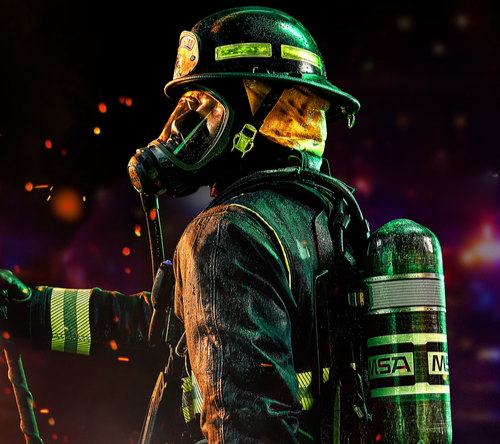
By Todd J. LeDuc, MS, CFO, FIFirE, Assistant Chief with Broward County (FL) Fire Rescue
You may have heard the term “tactical athlete” a lot recently. The term itself is not confined to the fire service and firefighters but other high-risk professions such as the military. The United States Marine Corp (U.S.M.C.) defines a “tactical athlete” as an individual who trains for combat readiness using a comprehensive athletic approach. Tactical athletes use all facets of strength, power, speed, and agility to improve their combat fitness level to their highest potential. The Marine Corps recognize that using speed and agility training will improve maneuverability of an individual in a combat situation such as maneuvering under fire. Additionally, focusing on power lifting exercises in a training regime improves total body power and increasing success in combat engagement. The U.S.M.C. has also added “High Intensity Tactical Training (HITT)” to enhance operational fitness levels and optimize combat readiness and resiliency for the essential tasks that Marines are expected or likely to need to be able to perform in combat.
Firefighting is a rigorous profession and the essential job functions that firefighters are called upon to conduct impacts nearly everybody system. Our actions on the fireground physiologically stress many responses that respond differently than from a homeostatic state. Below are some of the systems affected:
- Cardiovascular
- Hematological
- Thermoregulatory
- Respiratory
- Metabolic
- Immune/endocrine
- Nervous
- Muscular
Firefighters essential job functions are measured in “MET” values or “Metabolic Equivalent of a Task.” This is the rate of oxygen consumption during a task as compared to resting, and can be used to compare levels of exertion across various types of activities. As a reference point for most, humans at rest consume one MET. National Fire Protection Association (NFPA) Standard 1582, Standard on Comprehensive Occupational Medical Program for Fire Departments, speaks to an aerobic capacity of 12 MET or below as a medical condition for a fighter. The reality of firefighting is that search and rescue activities under smoke conditions require 16 METS. As a comparison, professional football players operate in the oxygen consumption range of 15-16 METS, while it has been measured that professional soccer players operate 17-18 METS. So, yes, the reality is that you as a firefighter are expected, through performing essential job functions, to be on part with a professional athlete—or, more appropriately, a “tactical athlete.”
The Phoenix Rapid Intervention Team studies which were conducted that it took on average 21.8 minutes to locate, package, transfill, and extricate a downed firefighter from a commercial structure. Additionally, it took twelve firefighters to complete rescue. As such, firefighters performing both essential fireground tasks or placed in the role of rapid intervention team requires that we be prepared to function at the highest levels of human performance.
These realities require each of us and our departments to focus on human performance measures such as physical fitness much like the U.S.M.C. approach. Additionally, firefighters must focus on hydration, nutrition, and behavioral readiness. All these elements are essential to survival on the fireground. Take a moment reassess where you are at currently on the tactical athlete spectrum and where you need to improve for you and your crews’ survival.
Posted with permission from Fire Engineering







